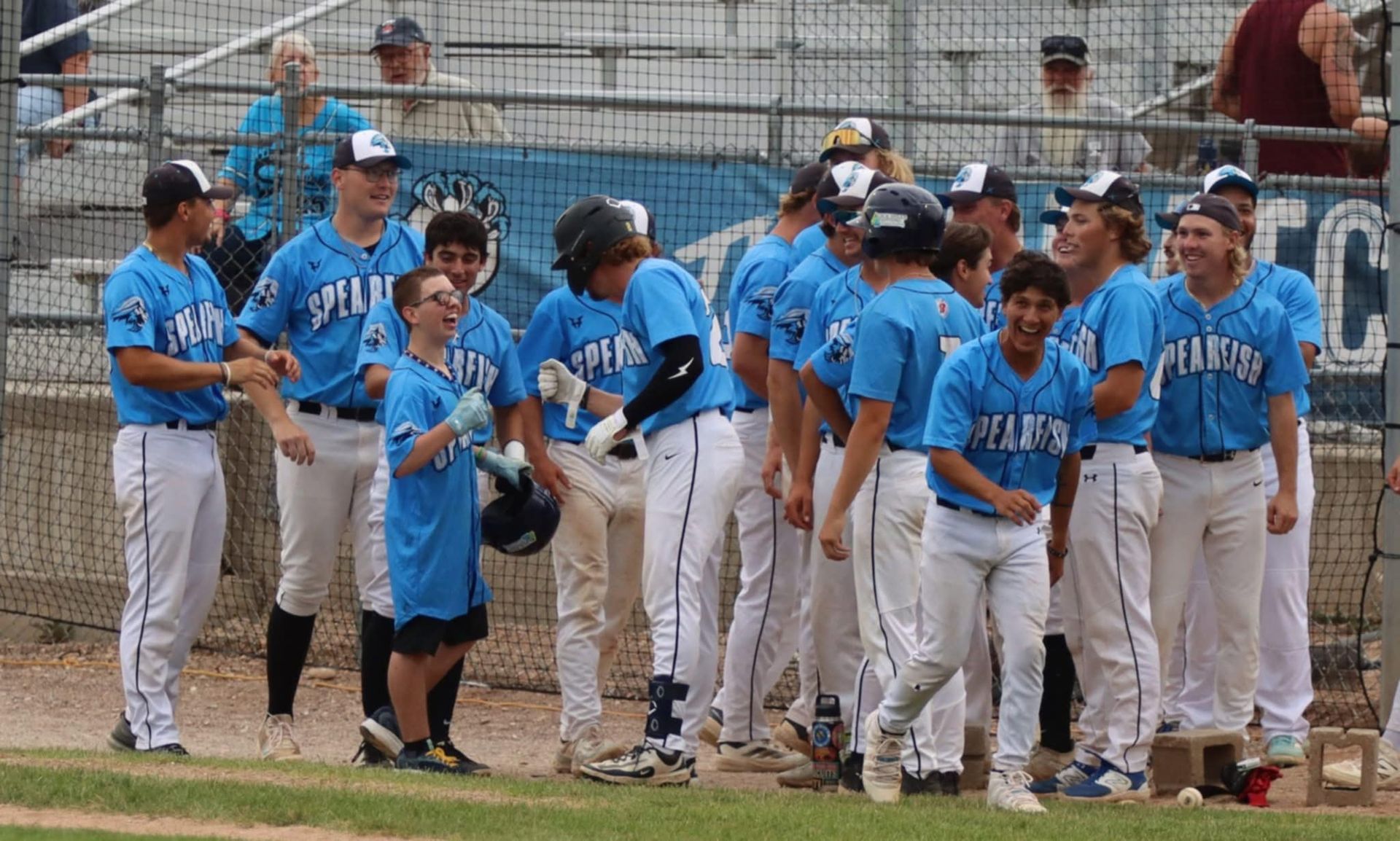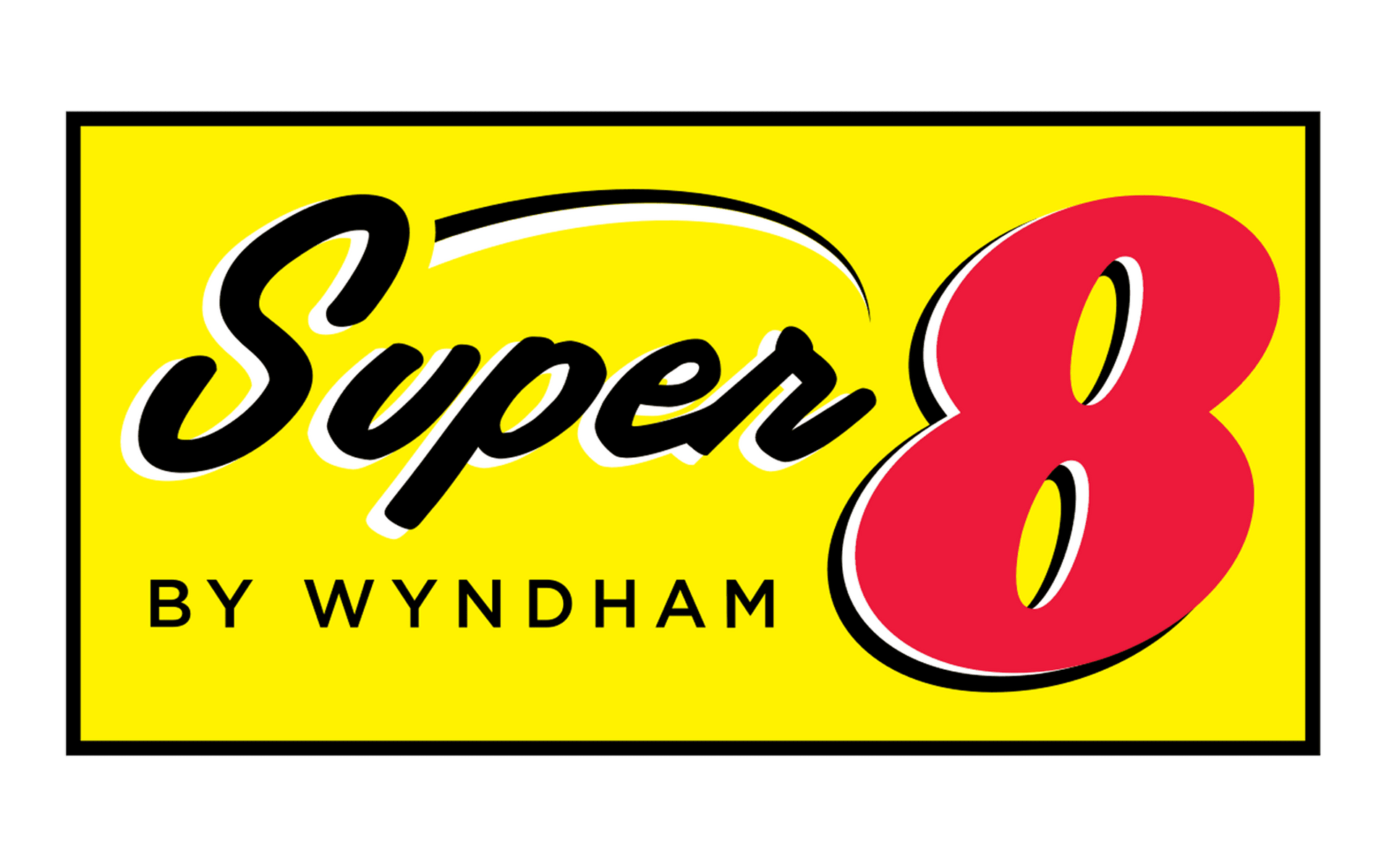The Grayt Team
The antique blue JUGS pitching machine hums to life. A low buzz spills out, that of a refrigerator working overtime. The wheels spin rapidly, primed to fire pitches at 40 miles per hour. Three wooden boards brace its back legs. To the right, a bucket sits half full with scuffed polyurethane baseballs, the yellow color faded from overuse.
Grayson Chapeau steps towards the turf mat, 60 feet away.
His stride is quick. Uneven. He picks up a white and gold Louisville Slugger, the grip frayed and curling near the knob. He tightens his hold and looks up. His mouth opens, revealing rubber bands and retainers between a crooked smile. On his head, a red Rawlings helmet. Edges chipped, plastic peeling. A scar peeks out from underneath.
“Gray, are you zoned in?” his mother Chelsey calls, lifting a ball from the bucket.
He doesn’t answer. He just nods.
She raises the ball above her head, then lets it drop into the blue chute. The machine spits it forward with a hiss.
Grayson swings. And connects.
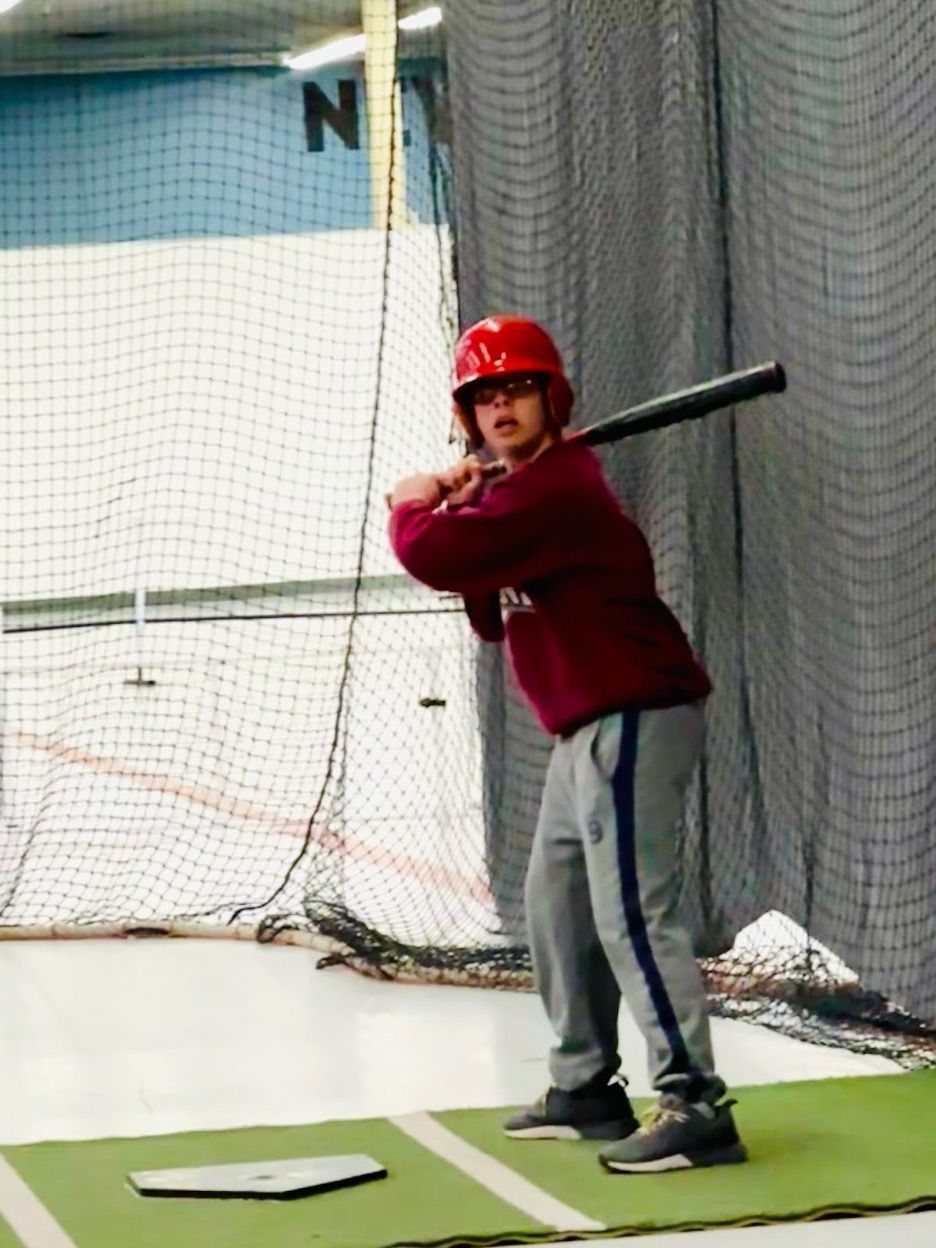
Still Grayson
The MRI tube is no wider than a cafeteria tray. The ceiling is less than six inches from his nose. Somewhere in the next room, a technician watches Grayson’s brain light up on a black-and-white monitor. A disembodied voice crackles through the speaker above his head.
“Hold still.”
They don’t need to repeat it. He’s been here more than 60 times. When he was just four years old, his family turned it into a game.
“Freeze!”
And he did. Without sedation, he would lay perfectly still for 45, sometimes 90 minutes at a time. Through MRIs, CT scans, and 40 rounds of radiation.
For brain cancer. Diffuse Astrocytoma.
But unlike Grayson in the tube, the tumor wouldn’t stay in place.
Woven deep into parts of the brain that handle vision, movement, and memory, the tumor is slow growing, but inoperable. The word “diffuse” means it spreads out instead of forming one clean clump. Removing it was never an option. Not then. Not now. Grayson turned 15 this year, and is nearly 11 years into a fight that has never paused.
“He has never been in remission,” Chelsey said. “He is fighting for his life alongside his dreams.”
He could be bitter. He has every right to be. But that is never who he has been.

Keeping Tabs
The sun dips behind the Black Hills in Spearfish, South Dakota, painting the outfield in a golden glow. Down below, a ballpark buzzes with summer life. Here, college kids chase innings and memories. Roughly 600 loyal fans roll through the gates every game, faithful through mountain storms and dry July heat. They wear the colors: blue, white, and black.
And Gray.
The colors, and heart, of the Spearfish Sasquatch.
In the bleachers, fingers twist aluminum tabs from drink cans. They drop these tabs into clear containers throughout the stadium, each with a black and gold sticker picturing Grayson’s face and message. One is taped to a recycling bin, the other rests on the counter of the concession stand.
It’s not a game. It’s something quieter. Each tab is for a boy who can’t take the field but never left the team. Grayson walks around, hyping up the crowd.
“When I say Spearfish you say Sasquatch!”
Sometimes fans, now friends, yell back. Other times his voice rings loud amongst the silence. He always ends with one big scream.
Often, he carries a glove. Other times a miniature wooden bat. When batters step to the plate, Grayson swings too. He dons a white Sasquatch jersey, signed by generations of players who have come through this town. The number on the back isn’t printed, however. It’s scribbled on with black Sharpie.
24.
That was Ryan Bachman’s number, the one he wore for four Sasquatch seasons. It’s retired now. Preserved in a circular placard mounted to the front of the press box, like a badge of loyalty drilled into the stadium’s bones.
“There’s nobody I’d rather see still wearing that number,” Bachman said.
After his fourth season concluded last summer, Ryan had to leave. Grayson was a wreck. Thankfully, Ryan is back as a coach. And Grayson? He is back in his usual spot, roaming the stands, uniting the crowd. Some days, Grayson joins the guys down in the outfield for their daily prayer.
“Grayson is part of the team,” Bachman said. “He may be a bit younger and smaller, but we all look up to him.”
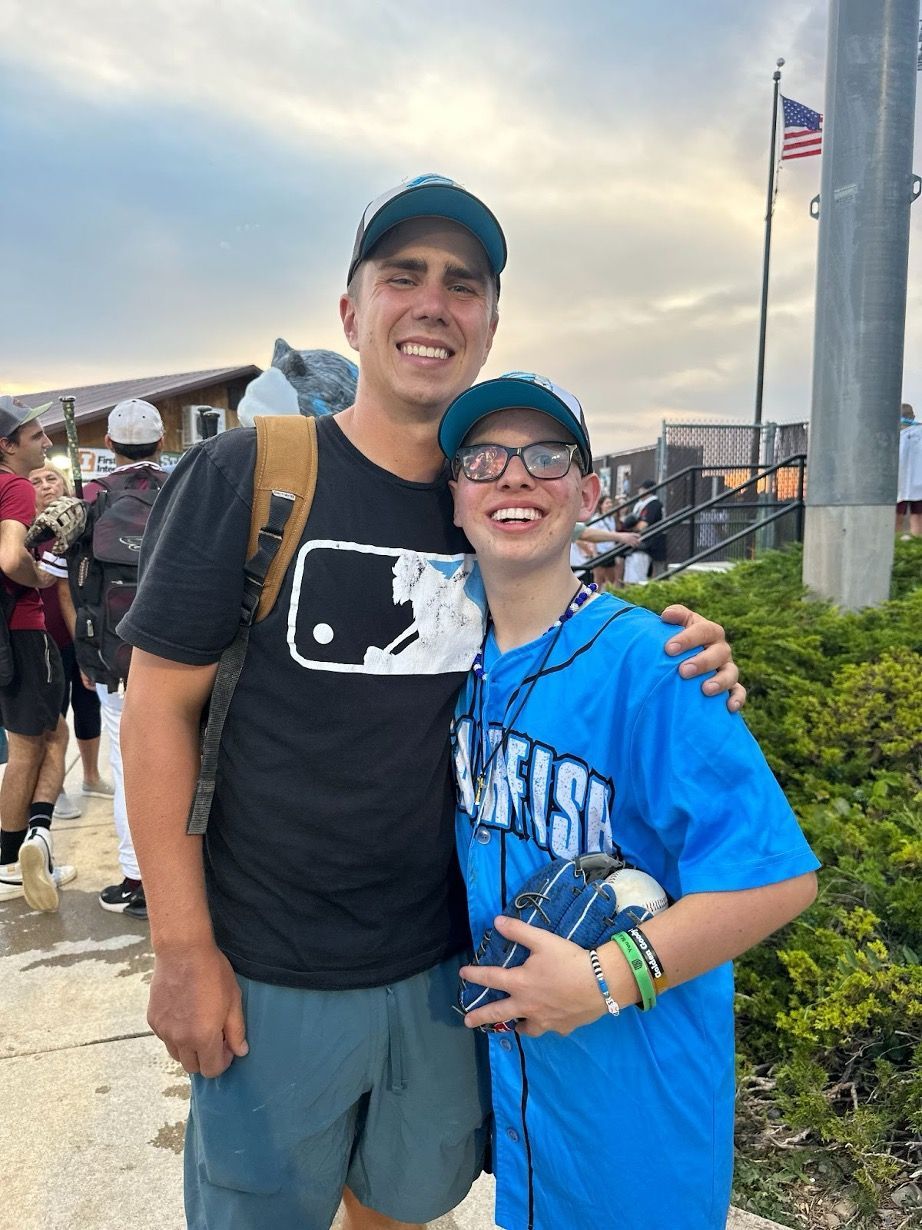
This summer, a new addition has been wrapped around the wrists of Bachman and many others. A navy band with gold lettering. On one side, a supportive message, bracketed by a childhood cancer ribbon:
No One Fights Alone! Go GOLD 4 kids!
On the other, a tribute. A symbol of what everybody at this park is part of.
Grayson’s Support Squad.
Almost every player received one, and none have taken it off. There’s an intentionality to all of this. The bracelets, the pulling of tabs, and the keeping of joy. Bringing the town, the team and the crowd together.
The first time Grayson donated pop tabs, he hauled 88 pounds, his entire wagon stuffed to the brim. In efforts to help house kids like him, it all went to the Ronald McDonald House in Minneapolis. He was four years old. Since then, his family has collected yearly donations. Today, the goal is just a bit more.
Four thousand pounds. 6 million individual tabs.
“We just keep breaking our own records,” Gray said, laughing. “How great is that?”
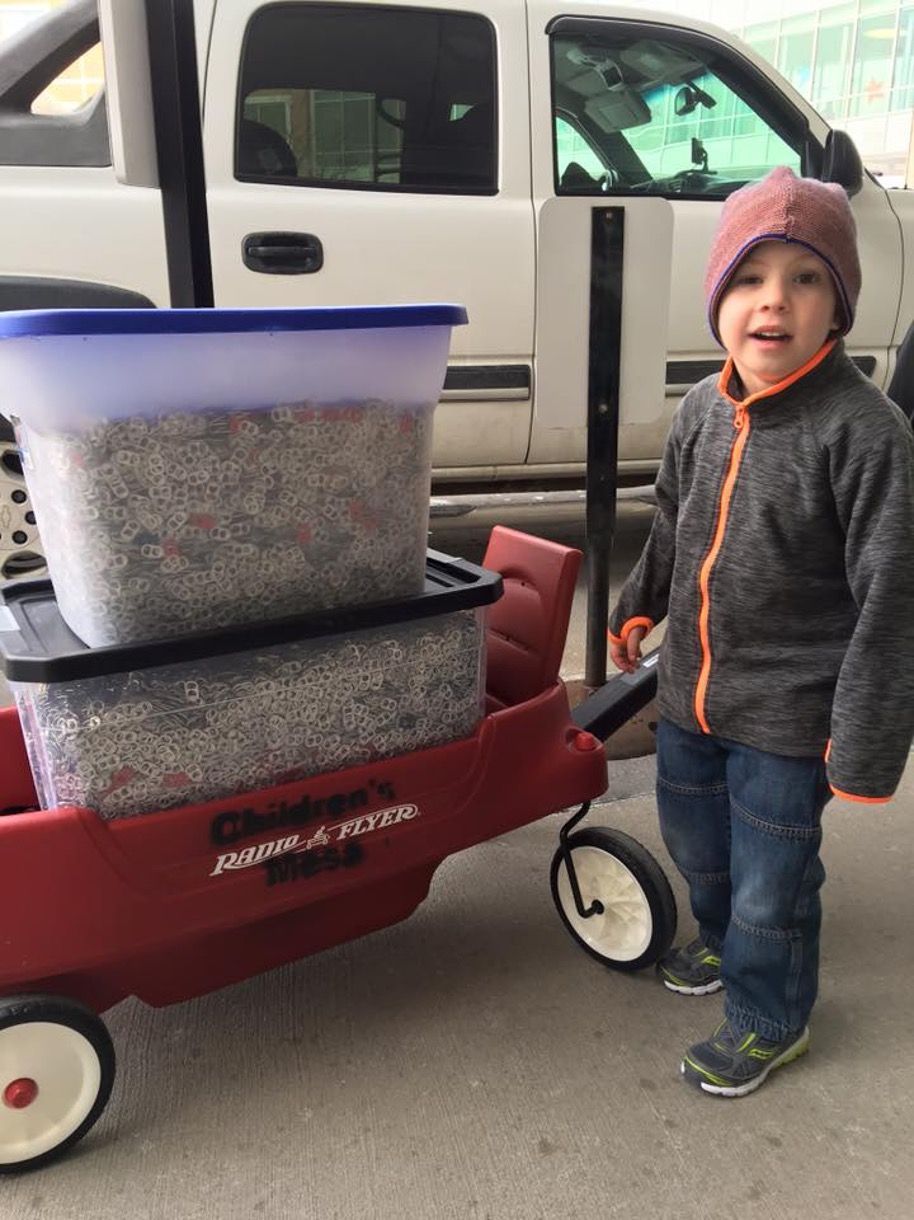
The Longest Season
Four years ago, white walls and fluorescent light surrounded his bed for 26 days.
A breathing tube pressed into his mouth. His body swelled from steroids. He couldn’t walk. Outside the room, time stretched and cracked. Inside, Grayson Chapeau fought to stay.
He had first been placed on the ventilator in the emergency room at Spearfish Hospital. When storms grounded the life flight bound for their usual children’s hospital in Denver, Colorado, the plane was redirected to an unfamiliar facility in Omaha. It was 2021, the pandemic still ravaging medical centers nationwide. None of the doctors were well-known at first. The wing of the hospital that housed Grayson was surreal. Ceiling tiles leaked from rainwater and hung low in the hallways.
“It was brutal,” his father Jeremiah said. “It looked abandoned. We felt lost.”
While Grayson’s regular team in Denver fought to transfer him back, he remained on the ventilator for several days. Jeremiah, a respiratory therapist, knew his son didn’t need sedation to complete his impending MRIs. He fought to get the tube out.
At his age, Grayson should’ve been producing just 75 milliliters of cerebrospinal fluid, enough to cushion the brain and spinal cord. But when the body produces more than it absorbs, pressure builds. The balance breaks. Hydrocephalus.
Grayson wasn’t producing 75.
He was pumping 300.
Back in South Dakota, Chelsey tried to hold the home together. She was taking care of four other kids, and sending kisses over FaceTime. Grayson would catch them, and pretend to eat them, even with the ventilator strapped to his face.
She couldn’t take it. When doctors got the green light to move Grayson, Chelsey drove to Denver. There, her son awaited. He was heavier, and hollowed out. A shell of the boy he’d been.
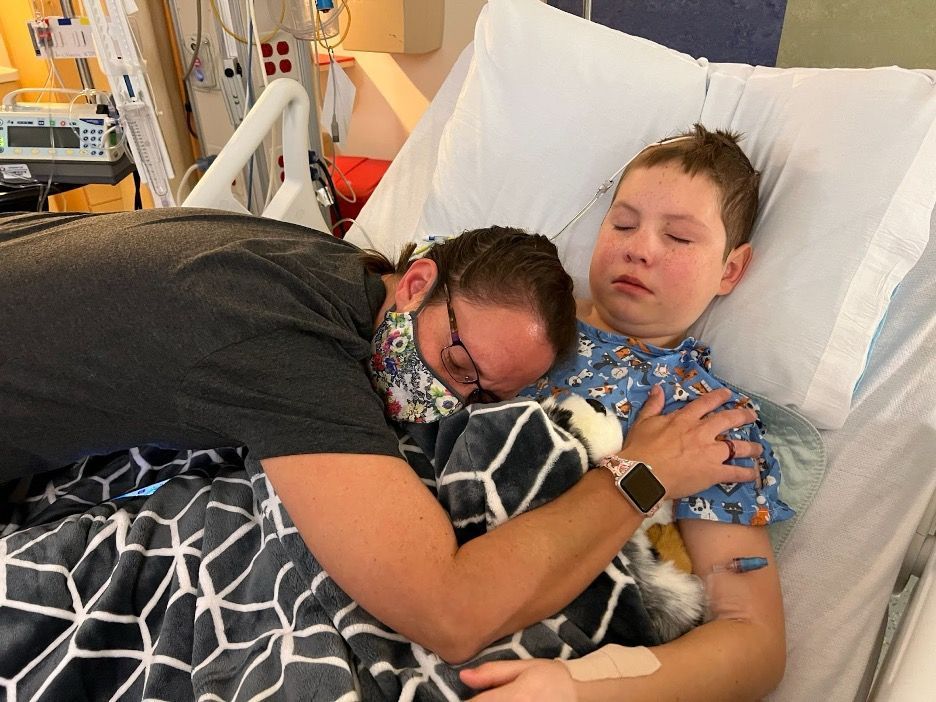
The siblings were also struggling. Caleb, Hannah, Josh and Saray needed rides to school and places to sleep. Uncertainty engulfed the family.
“Some nights I would stay up and just cry with them,” Hannah, now 12, said.
Surgeries became routine. At one point, every Tuesday for three weeks to install shunts: braided tubing redirecting fluid from brain to stomach.
“I don’t remember much,” Grayson said, his eyes wandering.
Jeremiah chimed in, “Maybe that’s for the best.”
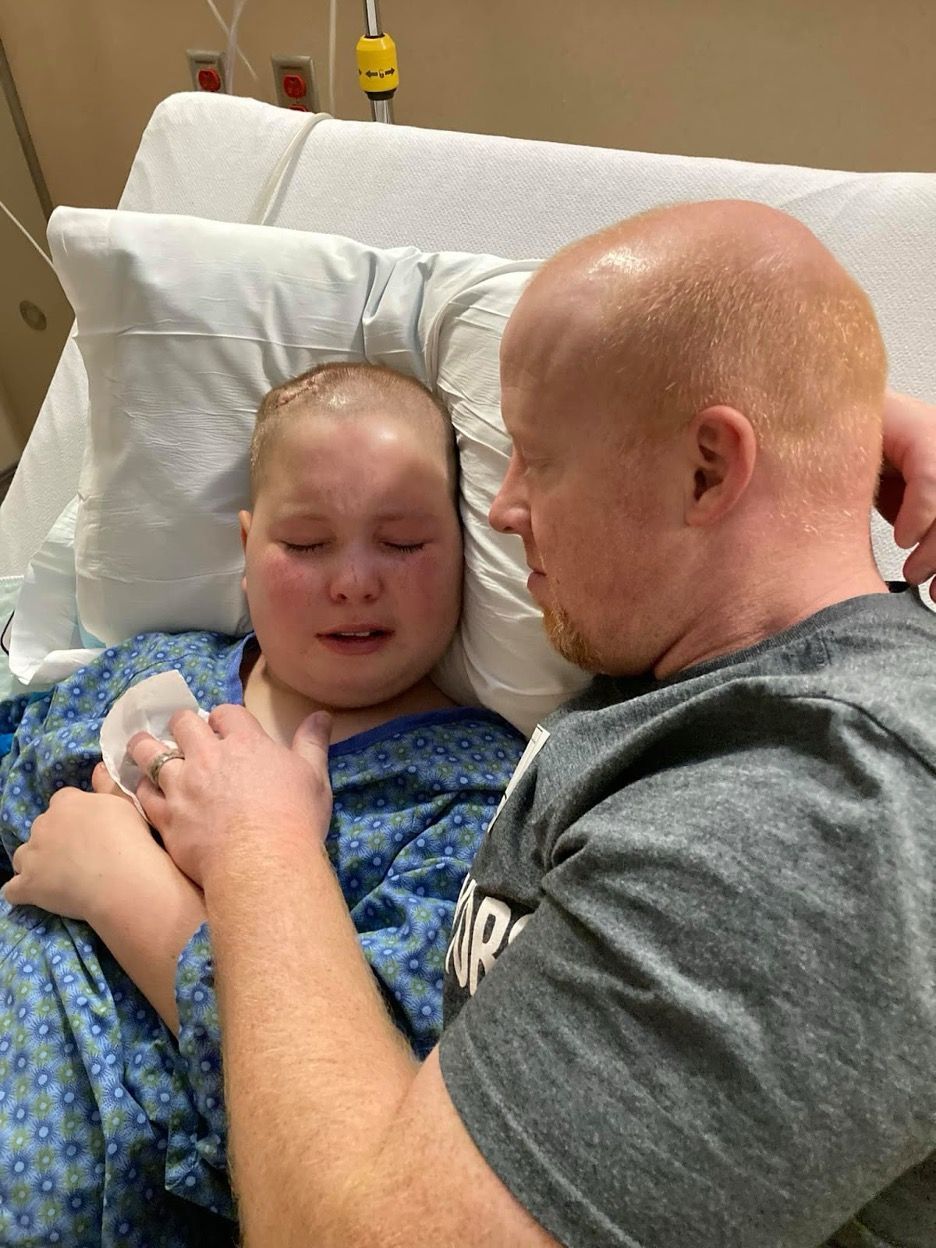
Soon, Grayson’s words shrank to a simple thumbs up. The family felt him slipping away.
“I remember walking the halls praying to God,” Chelsey said, tearing up. “I didn’t know how to help my son.”
One morning changed everything.
As Grayson lay there, eyes barely open, the whir of a hand sanitizer machine startled him awake. A burst of foam sprayed down, landing right on his dad’s head. It was accidental. Jeremiah flinched. Chelsey turned. Grayson giggled. It was a slow chuckle, but it was the first time in weeks they heard his laughter.
His shell had cracked open. The boy was still in there.
In the months that followed, his legs relearned their steps. He picked up Nerf guns again. During one Nerf target battle with his doctors, cans of pop were lined up on a hospital cabinet. Fitting. He grinned and insisted he hit “14 out of 20” shots. It was really 7 out of 10. But with his double vision, who could argue?
There would be more challenges, even after returning home. Grayson underwent hyperbaric oxygen therapy to stimulate healing in Rapid City, South Dakota, on top of physical therapy. He missed multiple days of school. Today, he still drives to Colorado every three months for more MRI treatments and doctor’s appointments.
“We had no idea how he would react to it all,” Jeremiah said. “Of course it was no problem. He is our superhero.”

Normal, Mostly
Taped to the wooden slats of his bunk bed at home are pictures. Some of them are new. Some are dangling by worn Scotch tape. Doctors and teachers of the past are featured. He doesn’t forget what they did for him.
Grayson lies down and pulls a tattered stuffed animal close.
“This is Softy.”
It’s a dog with an orange bandana, gifted to him during his first treatments. It’s been through hell. They both have.
He shares this room with his nine-year-old brother Caleb, who sleeps above him. Together they pull out a collection of Hot Wheels and a book of baseball cards. Mixed in among the MLB All-Stars are faces from the Spearfish Sasquatch. He keeps them in the same protective sheets. To Grayson, they all count.
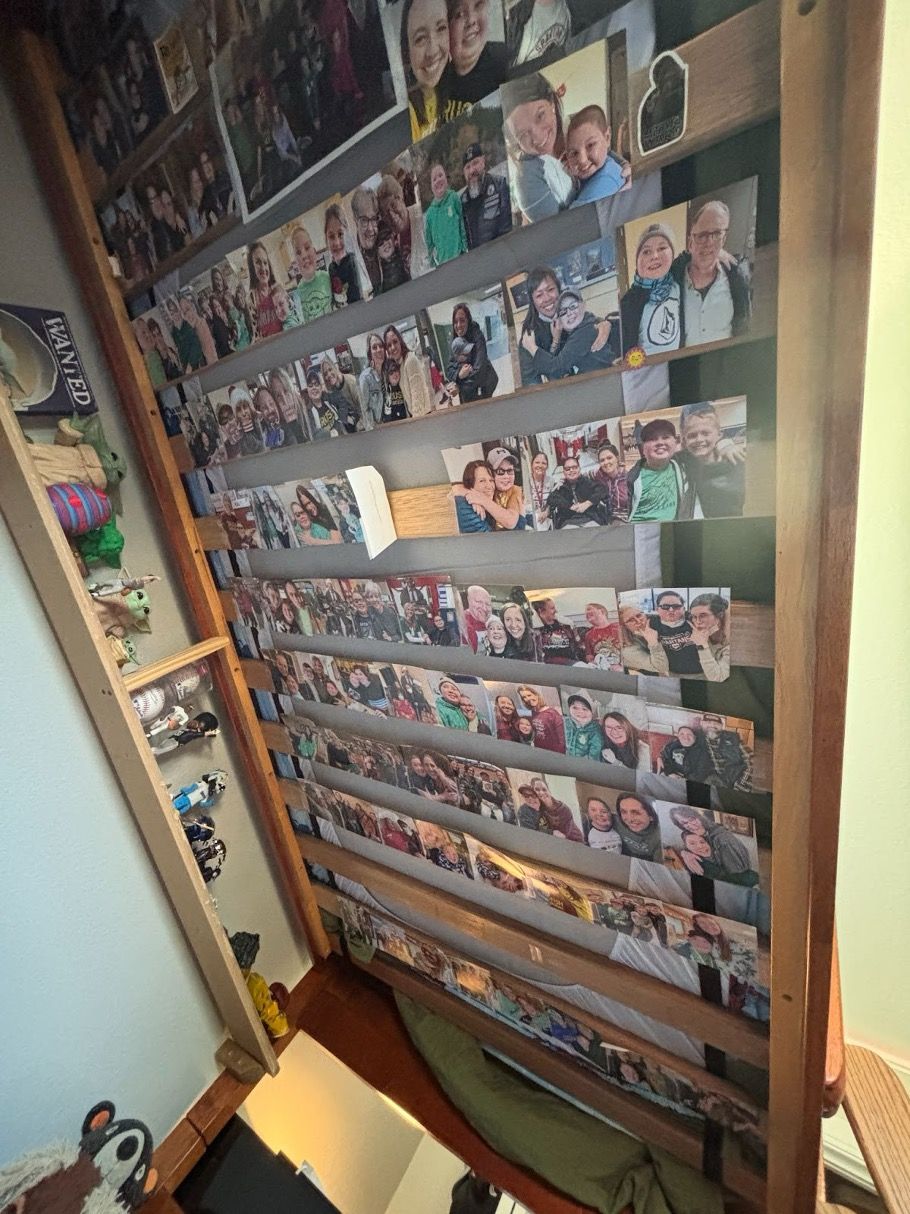
Down the hallway, Hannah and Josh help prepare dinner. Saray is leaving for work at the ballpark. The dining room smells of French dip sandwiches and Dawn dish soap from a day of cooking and bubble making. Raspberry rhubarb crumble cools on the counter. The berries are picked fresh from the backyard garden.
This is the world Grayson returns to after his long weeks at the hospital.
“It takes time,” Grayson said, pausing. “But I’m sitting here, right now.”
After dinner, he walks outside to examine his evergrowing collection of pop tabs, and pauses on the steps. His right hand tightens around the wooden railing of the stairs.
Onward.
Out in the garage, he beams as he shows off his latest invention: a homemade sifter designed to catch anything that doesn’t belong, anything that isn’t a true aluminum pop tab. A screw clinks against the magnets. He plucks it out.
“These don’t help,” he says, tossing it aside.
He grins the entire time, energized by the mission. What he’s been through is unforgettable. But that’s not what drives him. It’s where he chooses to place his focus.
“We think of it like a magnifying glass,” Chelsey says. “Whatever you look at, it grows. You can choose the good or the bad. Grayson chooses joy.”
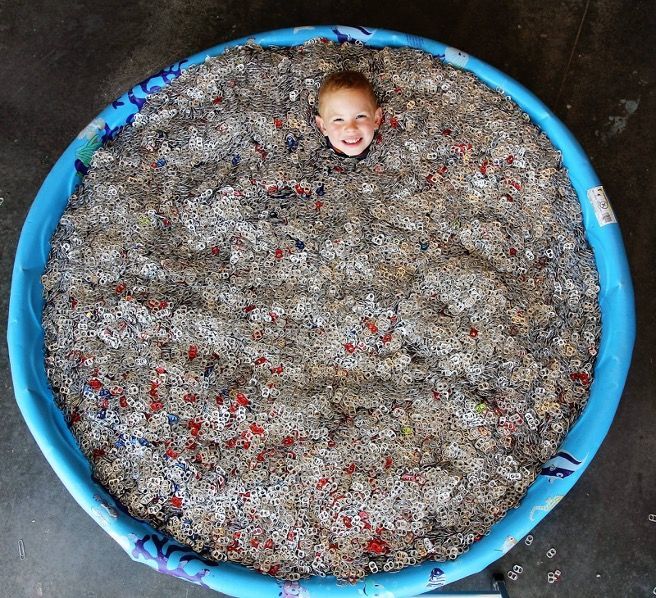
Ninety Feet of Freedom
It wasn’t a sold-out crowd. There were no news cameras, no formal rosters. Just a midsummer exhibition between the Spearfish Sasquatch and Post 164, the local high school team.
But in the bottom of the fifth inning, all eyes turned toward one kid in an oversized jersey. A kid every single fan knows. Grayson Chapeau was getting his chance.
As he stepped into the batter’s box, his shorts brushed his knees. His helmet wobbled as he adjusted it. His shoes weren’t cleats, just his gym pair from school. The gloves were borrowed.
On the mound stood Ryan Bachman, now a coach, once a player Grayson idolized. He waved his fielders back. Everyone knew what was coming.
Grayson swung at the first pitch. He connected, cracking it down the third-base line. Four years ago, he could barely muster five feet without a walker. Now, in front of a hometown crowd, cups of extra pop tabs rattling beneath the bleachers, Grayson ran.
All ninety feet.
He reached first base standing up. Arms outstretched. Smile wide. The dugout erupted, players sprinting over to wrap their teammate Grayson in gentle bearhugs. Ninety feet, a symbol: where he’s been, and where he has been leading others for so many years.
Grayson didn’t just take the field. He carried this town with him. The people of Spearfish might never know what it is like to be him. But in his presence, they’ve learned what it means to stand beside courage. To witness joy, chosen again and again. And to feel, somehow, familiar.
“You’re not supposed to just have a great day,” he said. “You’re supposed to make it great.”
